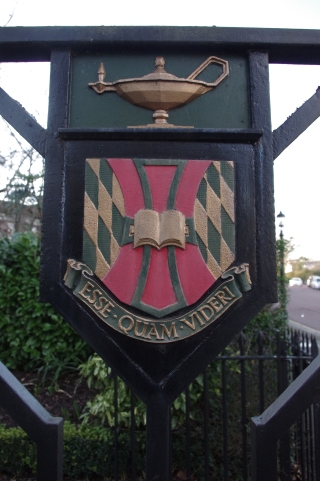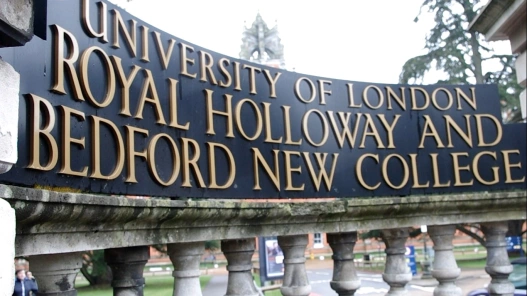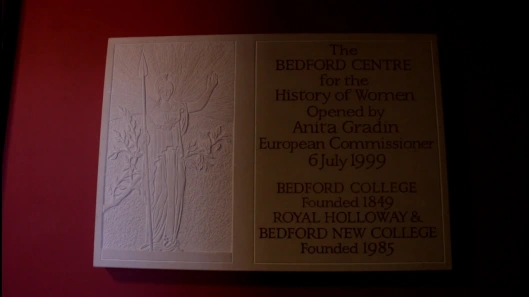Posted: March 16, 2015 | Author: Diana West | Filed under: Uncategorized | Tags: bedford college, bedford college university of london, bedford college university of london memories of 150 years j mordaunt crook, educating women, educating women a pictorial history of bedford college, elizabeth jesser reid, female only education, higher education for women, higher education for women in great britain, higher education for women in the uk, j mordaunt crook, linna bentley, rhbnc, Royal Holloway, single sex education, single sex education in great britain, single sex education in the united states, University of London, women only education |
Through my interview with a Bedford College alumna, I am hoping to discover the differences between women-only education and mixed education. Thus, the main focus of my essay will be on how Bedford changed once she went co-ed in 1965. As Bedford College was the first institution of higher education for women in Britain, I want to explore the reasons behind going co-ed, how that affected her public image, and how it affected the students. I also hope to subsequently learn about higher education for women in the 1960s, the job market, and home life after earning a degree.

From ‘Educating Women: A Pictorial History of Bedford College University of London 1849 – 1985’ by Linna Bentley
The topic particularly interests me because in the US there is always a lot of discussion around historically all-female schools going co-ed. Many of the all-female universities and colleges in the United States are extremely proud of their history and plan on staying single sex far into the future. Therefore, it is very surprising to me that Bedford chose to go co-ed as early as 1965.
I also became really interested in Bedford College ever since I found out that she’s part of Royal Holloway’s legacy. It really bothers me how she is often ignored and pushed to the back corner, when arguably she was the better school. Everyone knows who Thomas Holloway is, he has a statue. Elizabeth Jesser Reid? Some poor looking residence halls. I would personally like to learn more about Bedford from someone who attended the school and spread that knowledge to others.

Elizabeth Jesser Reid. Royal Holloway Archives.
I think that this is important in the wider context of public history because it is exploring an area that hasn’t really been explored within the public history sphere. Bedford College has a really rich history and the majority of it is languishing in the Royal Holloway archives. There haven’t even been many books written on the subject. I would thus like to bring to light her rich history and something that, I think, changed her image drastically.

One of the few books published recently on the history of Bedford College.
Posted: February 26, 2015 | Author: Diana West | Filed under: Uncategorized | Tags: bedford, bedford centre, bedford centre for the education of women, bedford college, bedford college university of london, bedford square, caroline barron, co-ed, co-education, coed, elizabeth jesser reid, esse quam videri, queen mary, regent's park, Royal Holloway, royal holloway bedford new college, royal holloway college, royal holloway university of london, women only education |

Plaque at 48 Bedford Square, London (originally 47). Photo: Alex Adams.
Through research for my other Royal Holloway and Bedford New College themed project, I have learned that the women of Bedford College have a lot to say. That being said, the alumni office has yet to return any of my emails, which makes me a little nervous, but also tells me to find a phone number. Due to the fact that Bedford alumnae seem to be quite feisty, I think I’m going to narrow my research down to just focus on Bedford as there doesn’t seem to be many people who could speak on behalf of both schools. I am further interested in Bedford because I feel she is not showcased enough at Royal Holloway and I would like to make her more well-known to today’s generation of students.

Bedford College Crest in Regent’s Park. Photo: Alex Adams.
I would personally like the interview to tell me more about Bedford College: the history, the student life, what it was like to be in Regent’s Park. I also want to find out what it was like to go from being the first institution in Britain for the higher education of women to a co-educational college. I want to understand how the dynamics of learning changed and why it was felt that it was necessary to go co-ed. Furthermore, I want to create a bigger tie between Bedford College and myself. When I entered Royal Holloway back in September I understood that I was going to Royal Holloway, University of London. Now I couldn’t truthfully say that.

Royal Holloway and Bedford New College, University of London: The official name of RHUL. Photo: Alex Adams.
As the interview is hypothetically supposed to be for a ‘public history audience’, I would like it to increase others’ knowledge of Bedford and the idea of women’s only education being opened up to men. I’m hoping the interview will provide a brief history on Bedford, how Bedford was different from Royal Holloway, and how Bedford changed when she went co-ed.

Queen Mary at the opening of the Tuke Building, Regent’s Park, 1931. Source: Royal Holloway and Bedford New College, University of London Archives.
My biggest concern right now is that I won’t be able to find anyone to interview, or too many people will come forward and I will have to turn them away. I would love to turn this into a bigger project, but as I have already submitted a proposal for my dissertation, I’m just not sure that that would be feasible. I have been in contact with Professor Caroline Barron and she suggested I attend a Bedford College alumnae event on March 21 and just ask for interviewees, which is a possibility.

The Bedford Centre for the History of Women: One way Bedford’s legacy is honoured. Photo: Alena Knaup.
Overall, I am not too anxious about my concerns and I am sure I will be able to find someone willing to speak with me. All I need to do is put a little more effort into contacting the right people.
Posted: January 29, 2015 | Author: Diana West | Filed under: Uncategorized | Tags: bedford, bedford college, bedford college university of london, caroline barron, co-ed, co-education, coed, egham, egham surrey, England, female only education, five college area, five colleges, higher education, History, j mordaunt crook, lasell college, local history, London, mount holyoke college, oral history, public history, public oral history, rhul, Royal Holloway, royal holloway bedford new college, royal holloway college, royal holloway university of london, smith college, surrey, umass amherst, united kingdom, united kingdom higher education, University of London, women only education |
A question that is often posed to me is, ‘But, what kind of history do you do?’ I used to not have an answer to that question, because I don’t have a specific area that I am particularly enthralled with. However, when I got that question the other day, my friend piped up and answered if for me, ‘You do, like, history around here, right? Like, local history.’ Finally, it was put into words. Over the past few years every time I’ve gone to study in a new place, I immediately throw myself into learning about the history of that location and here in Egham it’s no different. My Skills project last term was on life in Surrey in the Edwardian period based on postcards and the programme I am making for ‘The Public Communication’ is on the ‘hidden’ history of Royal Holloway. I thus want to continue in this tradition and learn about why Royal Holloway College and Bedford College went co-ed in the 1960s. I would like to explore the ‘death’ of women-only education in those two institutions and perhaps across Britain.
I come from a place that is known for its higher education institutions. When I describe where I’m from, I’ll say Western Mass, you know, the Five College Area? UMass Amherst, maybe? UMass is usually the landmark people identify with, but of the other four schools of the ‘Five Colleges’, two of them are well-known female only institutions: Mount Holyoke College and Smith College. Both of these schools take great pride in being just for women (for undergrad, at least) and strive to stay that way. Interestingly enough when I was applying to schools for my undergrad degree, three of the four schools I applied to where originally female only: Endicott College, Lesley University, and Lasell College. I chose to go to Lasell, where I learned that they didn’t go co-ed until the late 1990s. Coming from that background, I am particularly interested in why Royal Holloway and Bedford went co-ed so early compared to schools in the United States.
I hope to interview Professor Caroline Barron, a former History professor of both Bedford College and Royal Holloway Bedford New College. She also recommended that I get in touch with Dr John Prebble who was vice-principal of Bedford at the time of the merger of the two schools in 1985 and to look at the book Bedford College, University of London edited by J Mordaunt Crook.
The significance of this topic to public oral history will be that it will explore how the dynamic changed in higher education from just having females on campus to having both sexes. Both Bedford and Royal Holloway were founded to provide women with an education equal to that of men, so why was it that they then let men join them? As the topic is still within living memory and also coincides with the greater movement for women’s rights, I would like to understand how going co-ed changed the legacies of both schools.








Recent Comments